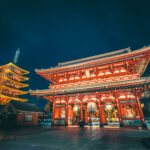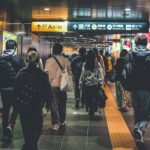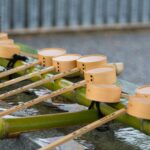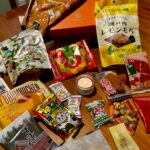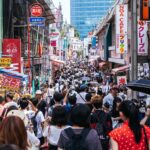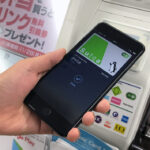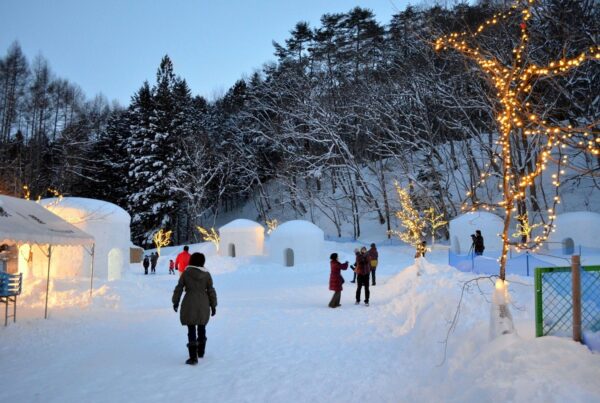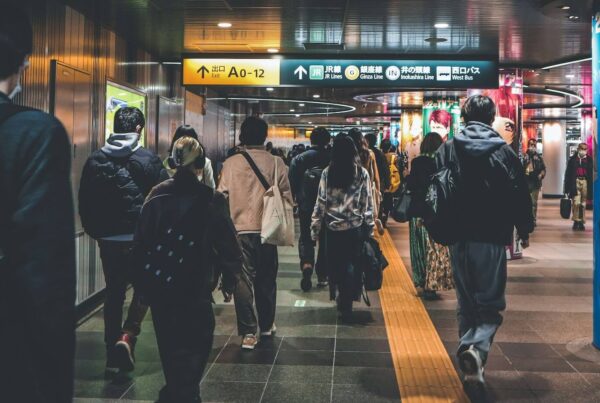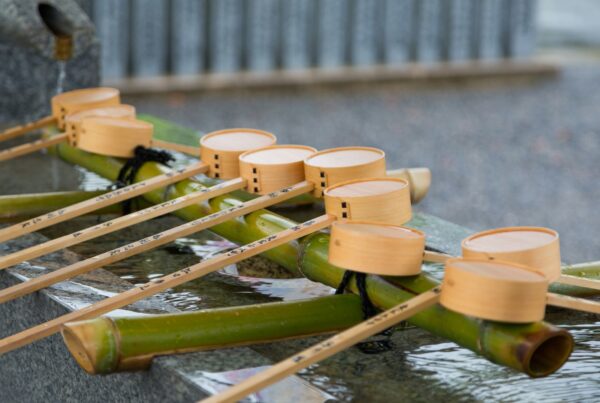One of the most crucial things to consider when planning a trip to another country is of course, what it is that you want to do there. Are you an outdoor adventurer? A soul-searching traditionalist? A foodie with a penchant for sweets? A snowboarder chasing powder across the globe? Japan is an amazing country that does one of the best jobs at catering for each and every individual type of traveler. Check our recommendation of the best time to travel to Japan.

However, quite often your research into a country will show up with the ‘best things to do’ without actually specifying when you can actually do it. Whilst one can assume that flower festivals generally happen during spring, there are millions of types of flora out there and their infinite ability to bloom in any environment is something the Japanese have understood and cultivated, and so visiting in spring may not always be the best time.
Imagine arriving just after Summer to catch some waves but finding out it’s actually monsoon season or arriving in Winter for some countryside road trips to capture the snow-capped landscape only to find roads are blocked. Even for the most seasoned travelers, assumptions when it comes to traveling can sometimes lead to the most disappointing outcomes.

We’ve all been there and we know how high disappointment levels can reach, so we’ve decided to write up some information on when the best time to travel to Japan is, and why this is the case. Whilst this may not appeal to everyone, it can help highlight certain aspects of seasons throughout the year in Japan, and possibly help shape your decision to travel at certain times. If we haven’t addressed anything that you’re curious about, hit us up in the comment section and we’ll be sure to help you out as best we can!
Table of Contents
Spring Season

Spring is the season of romance. The season globally conjures up the image of flowers, sunshine, and picnics, and Japan is no stranger to any of the above. With the spring season here being one of the best and busiest times to visits, especially considering that other seasons (like winter) can reach drastic levels such as minus 15 degrees, you can imagine that there is a whole heap of activities to do whilst visiting.
Spring in Japan occurs between March and May, however, as most people only visit Japan for a few weeks, you must be wondering, what time in spring is the best time to visit?
Cherry Blossoms

Cherry Blossoms are considered the national symbol of Japan. Their unique and distinguishable pink hue spread far and wide across the entire country, and millions of visitor’s flock in every year to experience the wonders of nature and to bask under the soft petals as they fall through the sky.
A crucial part of planning for the Cherry Blossom season is understanding when and where they are going to bloom. Whilst the general consensus is late March (in the more southern regions of Japan) to mid-April (in more central areas of Japan), this can sometimes deviate depending on the weather conditions each year. However, you can make a pretty strong bet that whilst the peak blooming period may not be during that time period, it should either have already begun or is on the latter end of the blooming period. Most people who travel with the intention of experiencing the cherry blossoms season book their tickets for this period.
If you haven’t heard of the famous Japanese Cherry Blossom season, then you are in dire need of information! It is probably the most famous time of the year to visit Japan. People travel far and wide to be able to capture rivers and lakes lined with hundreds of pink petals; they travel to castles and shrines all the way north and south to be able to experience historic Japan in the most picturesque settings; thousands of people flock daily to Yoyogi Park in Shibuya during the season to have magical picnics under the floating petals; it is all a surreal experience, and probably one of the best things to come from Japan.
Check out the #cherryblossom hashtag on Instagram to see what Japan has to offer!
Flower Festivals
Whilst late March to April may be the dedicated time for cherry blossom enthusiasts, there are many other flower festivals happening around Japan during spring that are definitely worth traveling to, and they’re not all limited to March and April.

The Sakura Tulip Festival, which generally happens in April, is the largest tulip festival in the Chiba prefecture. More than 600,000 tulips stand proudly on display during April and is the perfect idea for a romantic date in Japan. The festival includes performances, food stalls and is a perfect getaway from the Tokyo metropolis.

The Fuji Shibazakura Festival is a gorgeous display of pink/phlox moss blooms, generally on during mid-April to May. One of the busiest flower festivals in Japan, it’s fame can be attributed to the stunning backdrop of Mt. Fuji in the background as you leisurely stroll through the paths of approximately 800,000 flowers. This festival often falls during the Golden Week holidays in Japan, so if you’re visiting this festival, try to visit outside of these dates, or during the weekend mornings to avoid congestion and crowds.

Credits: abouther.com
Ashikaga hosts an annual Wisteria Festival that is famous worldwide. Located at the Ashikaga Flower Park, visitors can walk through a perfectly manicured garden which hosts hundreds of different flowers blooming in a rainbow spectrum of colors. The real showstopper, however, is the hanging wisteria garden at the center.
You will be able to walk under an entire ceiling of hanging wisteria flowers, blooming in the most gorgeous purple hue. During the middle of the festival, the gardens also become lit up at night. Whilst the festival usually starts mid-April and ends mid-to-late May, you may want to confirm when the night show is happening (usually towards the middle of the festival).
Matsuris and Anime

Credits: Yoshizaku Takada
The Japanese are a proud race who love to celebrate and honor their tradition. This is partly why there are so (so) many festivals happening throughout the year that are performed by the Japanese but are equally embraced and celebrated by foreigners. Some of the biggest and best festivals happen to fall in spring.
Amongst the many festivals hosted in Japan during spring, the Sanja Matsuri one of the biggest, and is an annual festival that is held in the Asakusa district, i.e. the district of Old-Japan. It is usually held during the third weekend in May, and over the course of the three days, approximately two million people visit Asakusa to get a glimpse of the gargantuan displays and floats.
The festival is held to celebrate the three founders of Sensoji Temple (located in Asakusa), and for the entire festival period, Asakusa hosts plentiful food stalls, festival games and performances with loud drums and flutes.

Credits: 思弦 張
Not all festivals in Japan revolve around tradition and blooms. The annual AnimeJapan trade-show (formerly known as Tokyo International Anime Fair) is one of the largest anime conventions in the world, and is attended by hundreds of film production companies, game and software developers, and anime enthusiasts worldwide.
Throughout the event, there are performances, interviews and major announcements made by some of the biggest names in the industry. Cosplayers take this opportunity to wear their best and brightest on display, and visitors can participate in workshops and seminars, and enjoy timeout at the anime goods shops and food stall area. Anime buffs from all over the world coincide their trip to Japan to attend this.
Autumn Season

Springtime is probably the most popular time to visit Japan (largely attributing to the Cherry Blossom season), however, Autumn in Japan should definitely not be slept on. Adventure seekers coming to Japan should especially look at this season, as it is when the humidity from the summer air is slowly distancing itself, and the outdoor autumn foliage (known as ‘koyo’ in Japanese), with its shades of burnt orange, red and brown, makes for one of the prettiest backdrops. Japanese people and foreigners (albeit slowly but surely) make their way all over the country to capture the stunning beauty of autumn foliage, and there are multiple famous spots with unparalleled views.
“Koyo” (autumn foliage)
Planning a trip around Japan for the foliage is a tad easier than planning for the cherry blossoms, simply because the season lasts longer. To view ‘koyo’, the season typically starts around mid-September, and lasts all the way through to mid-November (of course, this is dependent on where you are visiting, and the weather conditions during that year).

During the beginning of the ‘koyo’ period, the foliage generally begins higher up in the mountains, and so people trek into the inlands to hike to reach popular ‘koyo’ spots. As the season progresses, the foliage will start to reach parks and gardens, and can be easily accessible on a day trip. To view the forecast for ‘koyo’ in 2018, click here.
One of the most popular places to visit for ‘koyo’ that’s nearby Tokyo would be Nikko. As an area bound by nature, Nikko is full of mountains and gardens that become a sea of autumn colors during the months of October to November. Below is a small list of places that are popular with visitors during autumn:
Rinnoji Temple

Credits: TripAdvisor
Address: 2300 Sannai, Nikko-city, Tochigi
Access: From Nikko station, it is roughly a 35 minute walk. Otherwise, from Nikko station, take the Tobu bus to Chuzenji or Yumoto Onsen, and get off at “Shinkyo Bridge”. The temple is roughly 5 minutes away by foot.
Hours: 8:00am – 4:00pm (November to March) / 8:00am – 5:00pm (April – October)
Website: http://www.rinnoji.or.jp/
Tamozawa Imperial Villa Memorial Park (an imperial villa enlarged as a retreat for the Emperor Taishio)

Credits: TripAdvisor
Address: 8-27 Honcho, Nikko-city, Tochigi
Access: Take a Tobu bus from Nikko station on the JR Nikko line or from Tobu Nikko station on the Tobu Nikko line for “Chuzenji Onsen” and get off the bus at “Nikko Tamozawa Imperial Villa Memorial Park” bus stop, and walk one minute.
Hours: 09:00-17:00 (reception 09:00-16:00) (April to October) / 09:00-16:30 (reception 09:00-16:00) (November to March) / Closed Tuesdays
Website: https://www.park-tochigi.com/tamozawa/news/info/english
Kegon Falls (at 97 meters, it is the most famous of Nikko’s 48 waterfalls)

Address: Chugushi, Nikko-city, Tochigi
Access: Take the Tobu bus from JR or Tobu Nikko station towards Chuzenji Onsen, get off at Chuzenji Onsen” bus stop (this ride will take roughly 40 minutes), and walk 5 minutes.
Hours: 08:00-17:00 (March, April, and November) / 09:00-16:30 (December to February) / 07:30-18:00 (May to September) / 07:30-17:00 (October)
Website: http://kegon.jp/
Hiking Mountains

To all the outdoor adventurers reading this, autumn is the time for you. Without pollen in the air to induce hay fever, humidity in the air to make you sweat double, and temperatures that are sub-tropic or sub-arctic, autumn is the perfect time to embark on trips across the country to explore peaks of mountains and nearby villages for views that need to be experienced in person and food that you just can’t get in the main cities.

Credits: Guilhem Vellut
For those who enjoy the outdoors but don’t want to actually hike, luckily for you, the Japanese are big believers in saving time (and energy) and have built cable cars across many of the popular mountains. For a small price, you can hop in a car that takes you right up to the top, with gorgeous views along the way, without breaking a sweat!
Mt. Fuji
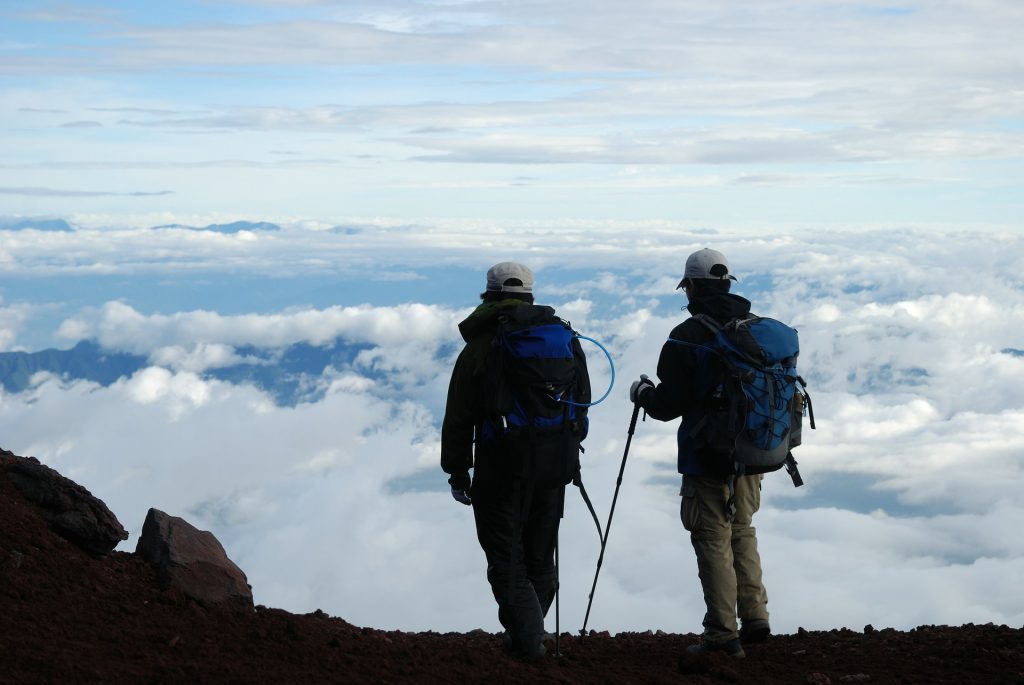
The official season to climb Mt. Fuji is from July to mid-September. However, most people who have traveled to Japan during summer (June to August) can attest to the fact that Japanese summer brings about humidity that quite indescribable (and not in a good way). Thus, traveling to Japan during the Autumn season (late August to mid-September) would be the perfect time to climb the most famous mountain in Japan, and by doing this, you will avoid the crowds.
Interested in climbing Mt. Fuji? Here is an extensive site to assist with the planning for your climb. This isn’t your average hike up the mountain, so please make sure you take the necessary precautions
Months to Avoid
With all countries, there will always been a time of the year to avoid, either due to lack of choices activities, expensive peak-period pricing, and more often than not, seasonal limitations to sightseeing. Below we’ve listed a few months you might want to avoid (and reasons why!):
January – February: if you’re the type to get cold very easily, and don’t enjoy wearing at least three layers of clothing whilst traveling, January to February is not for you. Whilst temperatures around Tokyo can reach around 2 degrees, traveling further up north will subject you to temperatures that could fall below 0 degrees, possibly reaching minus 15. Those who revel under the hot summer sun, laying by the beach and sipping cocktails should probably avoid this period.
End of December – Early January: this is a tip for the general public, as almost all shops close during the New Year period, making it a very quiet time throughout Japan. Some places close a few days before New Year’s Eve, but most will close for a few days after New Years Day for rest, recuperation, and temple time before opening back up.
Early June to Mid-July: notoriously known as the ‘wet season’ in Japan, it is during this season that Japan (on the most generic scale, country-wide) experiences the most rainfall. Whilst it may not rain the entire time, with it being the beginning of summer, the humidity in the air can almost become unbearable for some people.
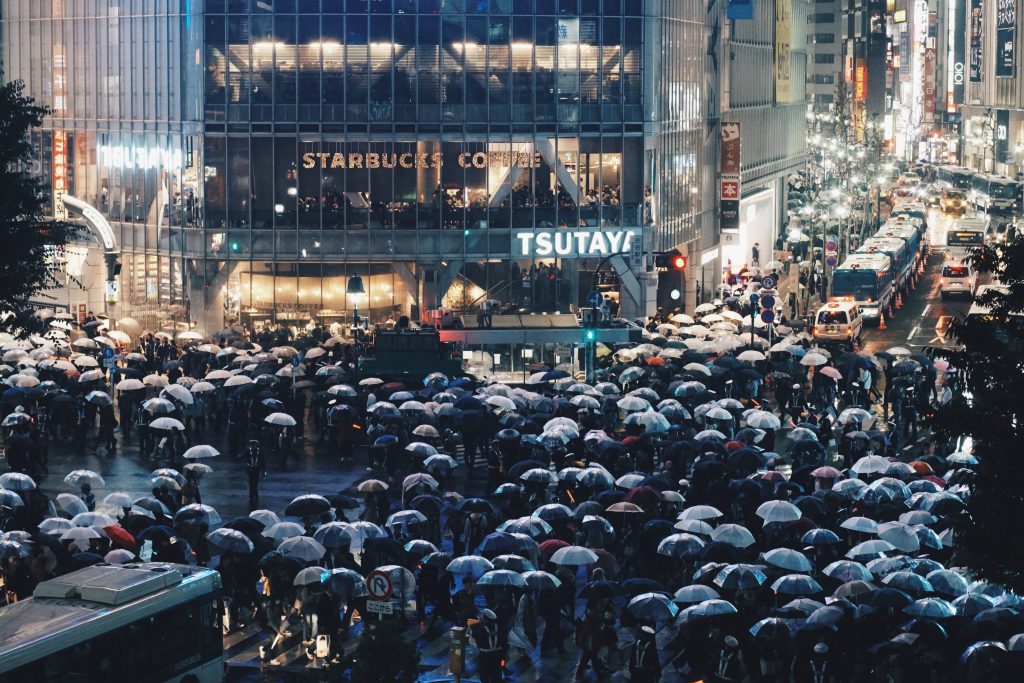
Cherry Blossom Season & Golden Week: During mid-to-late April until the beginning of May, Cherry Blossom season is on full blast. Golden Week usually falls between these dates annually as well. If you’re not a fan of viewing blossoms or crowds, then it is best to avoid these months. Not only will most of Japan be congested with crowds of tourists and locals trying to capture the sakura blossoms left, right and center, but the ticket and hotel prices during this period are normally astronomical.

And there you have it, a basic guide to when and why you should travel to Japan. Again, we understand that the reasoning for these tips may not be right for everyone, so take our advice with a grain of salt and travel when you feel the most comfortable.
Now that you know what is the best time to travel to Japan, you can check our Japan travel tips and start planning your travel to Japan.
What is the best time to travel to Japan for you? Share it with us on our Facebook Group. Also, don’t forget to follow us on Instagram, Facebook, and Pinterest. Have a nice trip!




